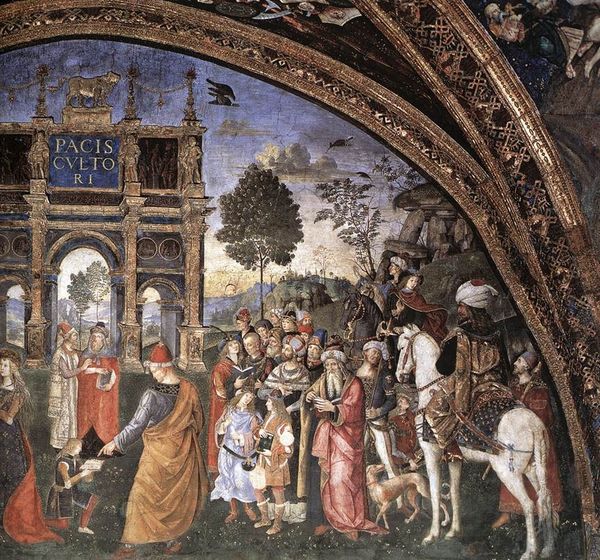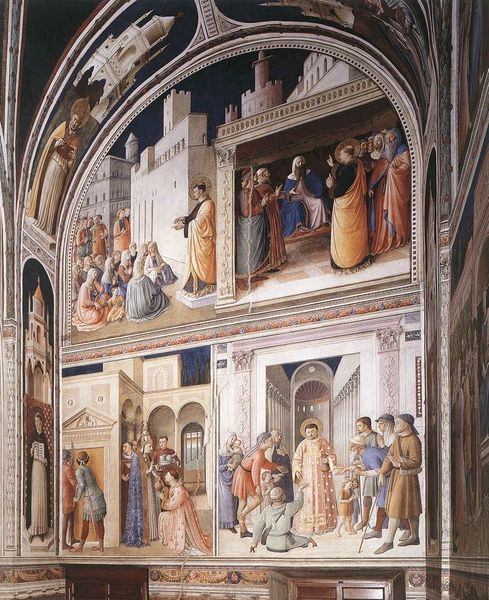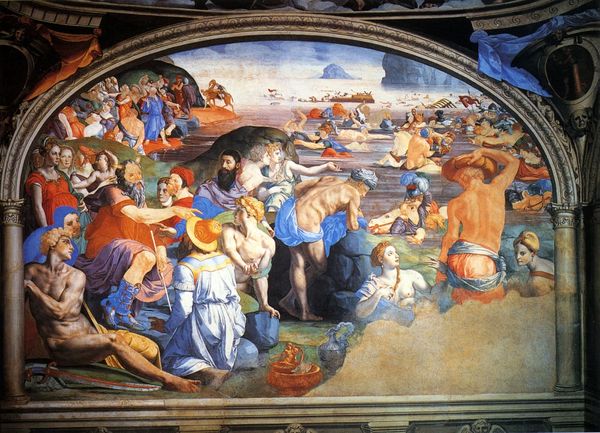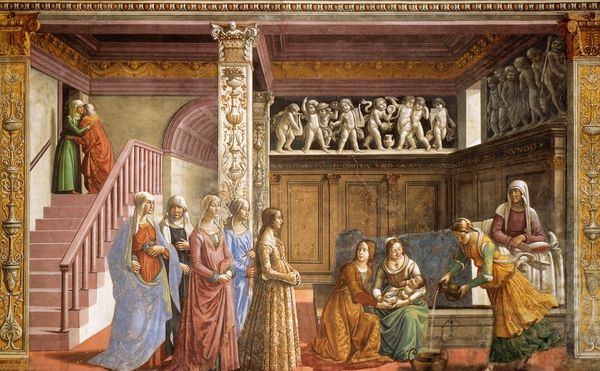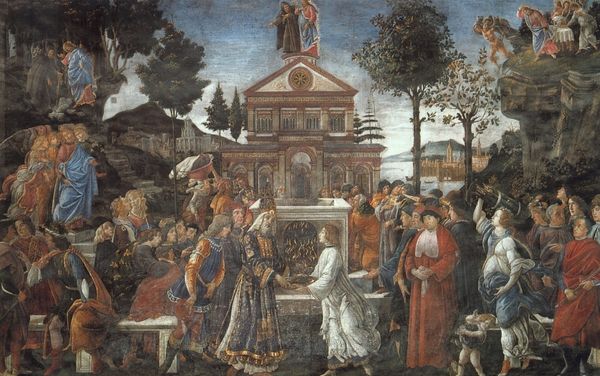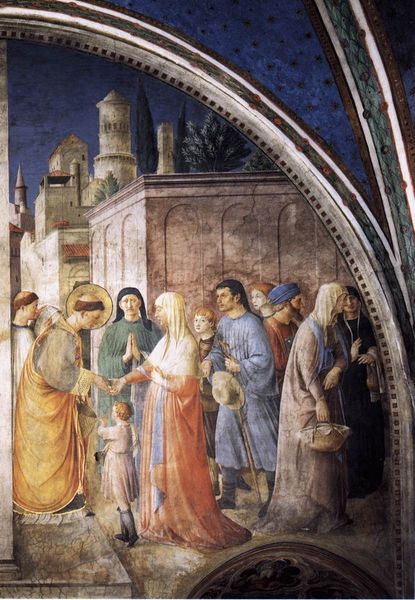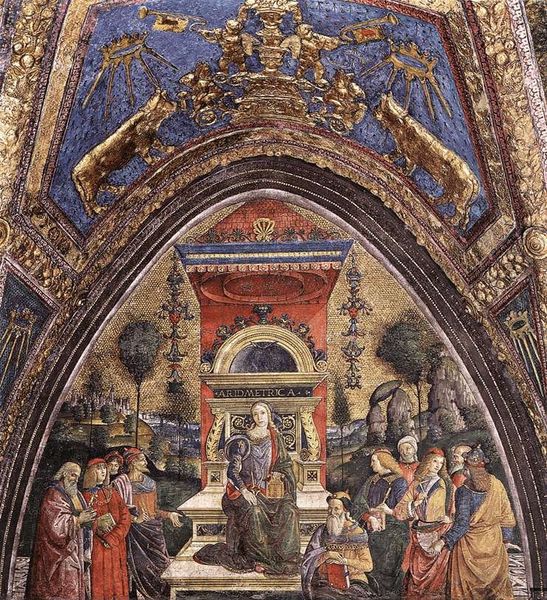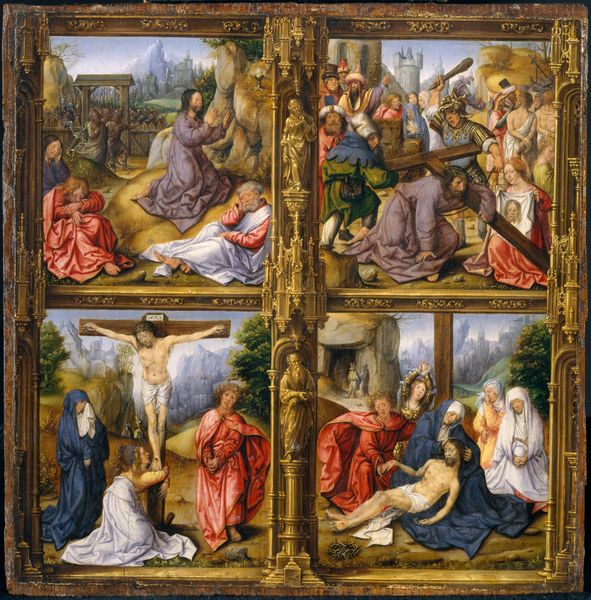
painting, oil-paint, fresco
#
portrait
#
narrative-art
#
painting
#
oil-paint
#
sculpture
#
landscape
#
figuration
#
fresco
#
oil painting
#
jesus-christ
#
christianity
#
history-painting
#
academic-art
#
italian-renaissance
#
virgin-mary
Copyright: Public domain
Curator: Ghirlandaio's "Adoration of the Magi," a fresco from 1490 gracing Santa Maria Novella. The narrative feels...well, conventional. What strikes you about it? Editor: It's beautiful, of course! But all those figures, the architecture, the landscape…it's a lot! How do you interpret the choices made in composing such a busy scene, beyond just telling the story? Curator: Let’s think materially. It's a fresco. That means pigment bound directly to wet plaster – labor, time, skill, all intensive and all physical. Consider the status such an elaborate commission signals for both Ghirlandaio and his patrons. Editor: Right, fresco demands a commitment; you can’t just move it around or easily correct mistakes. So, its permanency in public highlights that wealth. Curator: Precisely. And note the integration of landscape. Beyond just backdrop, isn’t it about claiming territory? It all signals power – political and economic, embedded in this act of religious devotion. Editor: So it's not only adoration of Christ, but maybe also quiet celebration of Florence's material wealth enabling the creation and commissioning of such works? Curator: A potent possibility. This opulent materiality doesn't negate spiritual significance, but rather underscores the worldly power intertwining with religious themes during the Renaissance. How does this reading sit with you? Editor: It's certainly thought-provoking to think about frescoes and commissions as material statements of power, alongside their religious meanings. I hadn't considered the labor involved so deeply. Curator: Understanding the material and production sheds light on these complex societal and historical elements present in this magnificent work. Editor: I'll never see frescos the same way again!
Comments
No comments
Be the first to comment and join the conversation on the ultimate creative platform.

